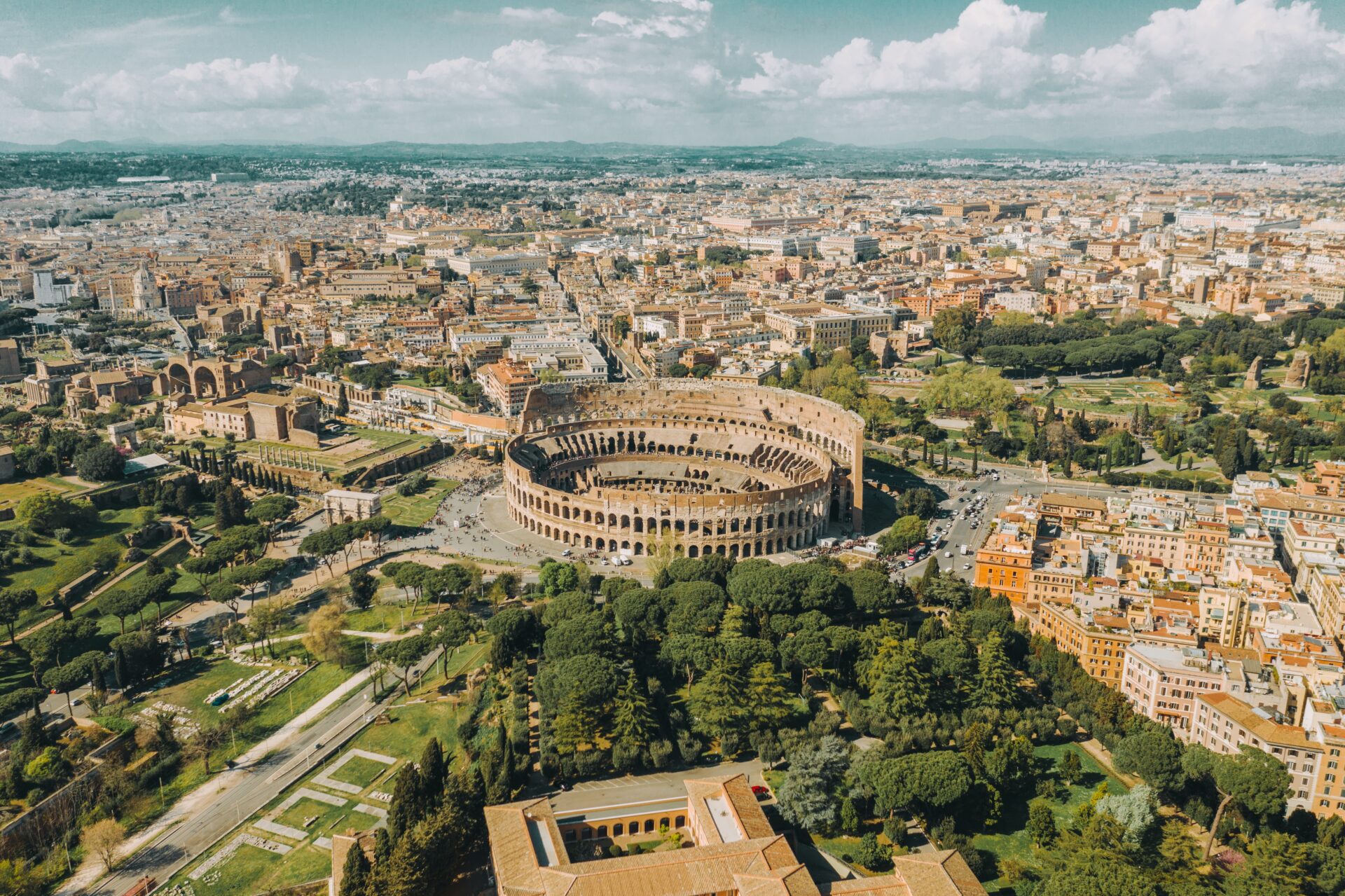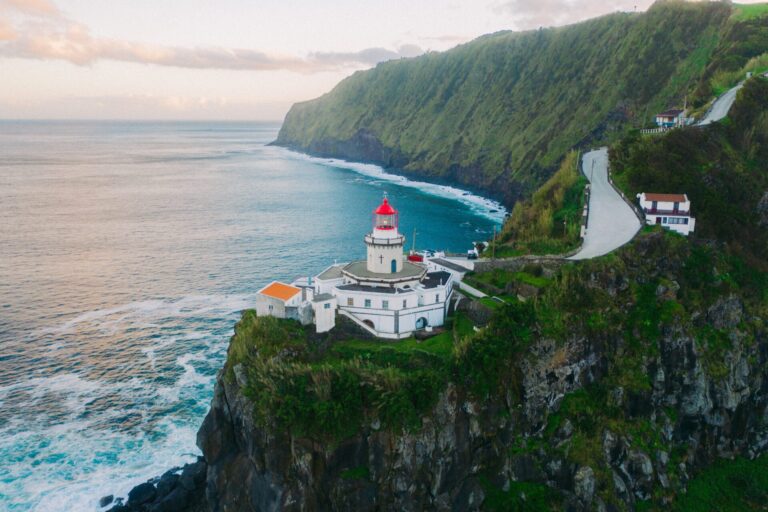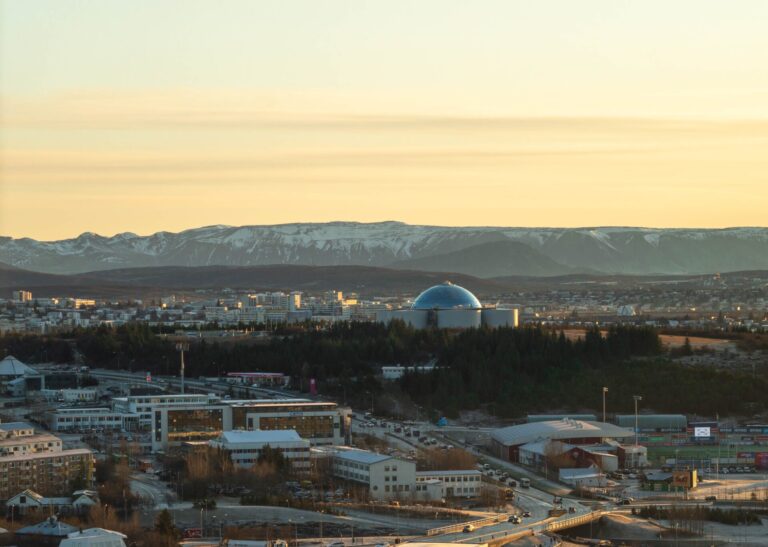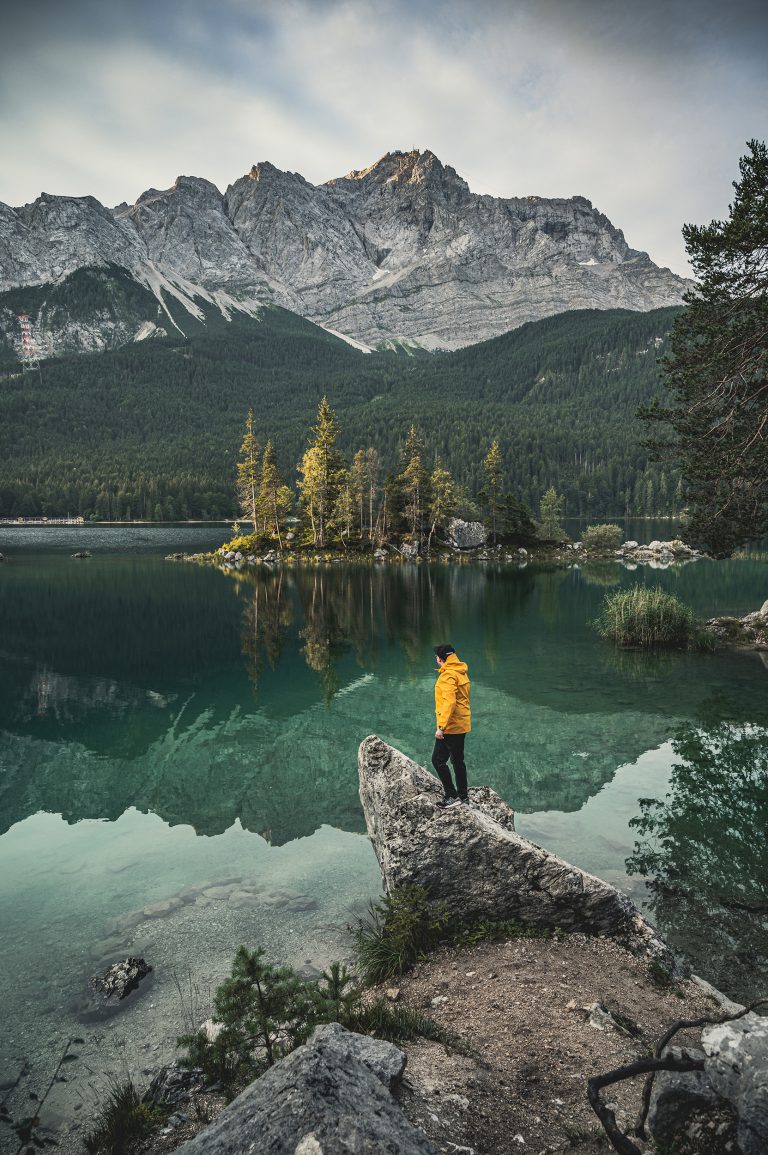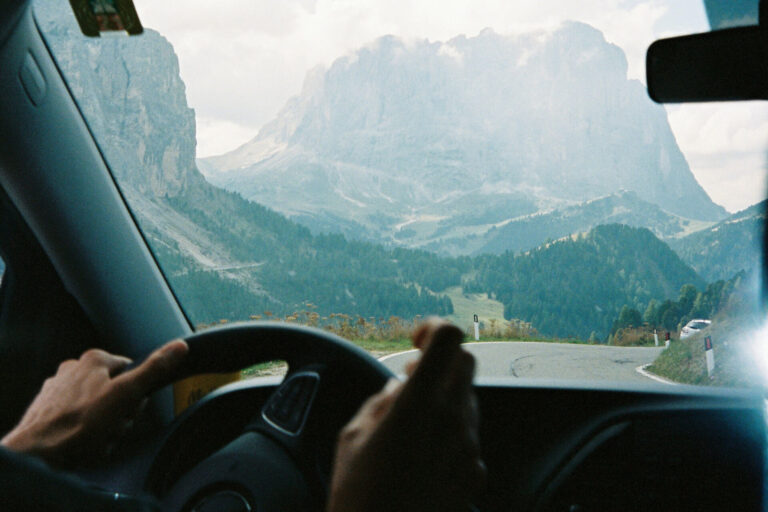Guide: the historical places in Rome (itinerary)
Rome, the capital of Italy, is an ancient city filled with treasuries of history and culture; With a history spanning more than 2,500 years, Rome is home to some of the world’s most iconic and historical places. From the Colosseum’s grandeur to the intricacies of the Roman Forum, the city is a testament to the achievements of one of the world’s greatest civilizations. The ancient Romans left a lasting legacy of historical places that continues to fascinate people to this day.
This itinerary is filled with the most historical places in Rome, such as the St. Clement Basilica, the Villa Gregoriana, and the Colosseum. These places will give you a deeper understanding of the history and culture of ancient Rome and the impact it had on the world today. I am excited to take you on this journey and share my knowledge and passion for this incredible city. Let’s get started!
Page Contents
Tips for visiting Ancient Rome
- Rome is known for its waiting in lines, so don’t try and attempt to visit every landmark in Rome during your trip unless you’re staying for a week or longer. Instead, savor the city’s atmosphere and try to discover some more unique landmarks.
- Try to visit the historical places in Rome during the off-peak season: it can get very crowded, especially during the summer months. Visiting during the off-peak season (spring or autumn) will give you a more pleasant experience.
- Ancient Rome has a rich history, with many layers of history to uncover. Consider taking a guided tour from an archaeologist, as they will be able to give you a deeper understanding of the history and significance of the sites you are visiting.
- When it comes to food, Rome is a true paradise for travelers. The city is renowned for its delicious traditional Italian cuisine, so we created a Foodie’s Guide that lists the best places to eat in Rome.
- One tip is to pick a place to stay in the city’s historic center when visiting ancient Rome. This will allow you to easily visit popular landmarks such as the Colosseum, the Roman Forum, and the Pantheon, all of which are located within a few kilometers of each other.
Rome Itinerary day 1: Ancient Rome from Above
We start our journey through some of the historical places in Rome from above by visiting some places that are off the beaten path.
Trastevere
Our first stop on this itinerary is the neighborhood of Trastevere, one of the oldest and most charming neighborhoods in Rome. Trastevere is known for its narrow, winding streets, colorful buildings, and lively atmosphere. It’s a great place to wander and discover the city’s hidden gems. Here you can find some of the best restaurants, bars, and pubs in town. We will also visit the beautiful church of Santa Maria in Trastevere, one of the oldest churches in Rome and a must-see for any history buff.
We start this journey by venturing away from the Tiber River to discover the charming area around Trastevere. You’ll recognize this region by its picturesque and medieval streets. In the western part of the neighborhood, you’ll find the Vicolo della Frustra steps, guiding you to the top of the hill.



Tempietto del Bramante
Before arriving at the top, we’ll come across the Tempietto del Bramante, a small circular temple built in the early 16th century by the famous Italian architect Donato Bramante. It is known for its architectural and artistic significance as one of the most important examples of High Renaissance architecture. It is a masterpiece of architectural harmony, proportion, and symmetry.
According to the legends, Saint Paul (the most influential apostle of Jesus Christ) was beheaded on the site where the Tempietto del Bramante now stands because of his efforts to spread the message of Christianity.
Janiculum Hill
When we continue our hike, we arrive at Janiculum Hill, one of the most charming and panoramic spots in Rome; here, we can see the entire city and get a sense of the ancient Roman’s lay of the land.
Next to its view, Janiculum Hill is also home to several important monuments and landmarks; The most famous one is the Fontana dell’Acqua Paola, a beautiful fountain built in 1612 – the perfect spot to take a break, enjoy the view and take some pictures.
Janiculum Hill is also famous for the “Gianicolo cannon” which is fired every day at noon, following a tradition that dates back to 1847. The cannon fire signals the city and the surrounding hills that it’s noon and also a way of testing the cannon.
Janiculum Terrace
On the top of this hill, we also find the Janiculum Terrace, one of the most panoramic terraces in Rome. From here, you can enjoy a beautiful view of the city and the surrounding hills. It’s a perfect spot to end our first day and take one last look at the ancient city of Rome before heading back down.
Rome Itinerary day 2: Ancient Rome from Below
On our second day visiting the historical places in Rome, we explore the ancient ruins and structures that lie beneath the modern city.
Because when we walk through the city, we notice that many of the buildings and monuments have a certain aged appearance. This is because they are built on top of ancient ruins or made of ancient materials. This is because Rome has been built, rebuilt, and repurposed many times throughout its history.
For instance, let’s take the example of the Domus Aurea or “Golden House” of Emperor Nero, a palace complex built after the fire of 64 AD, that was later covered with earth and debris. It was rediscovered in the 15th century after being buried and forgotten for centuries.
The city of Rome is covered with these ancient catacombs, subterranean tombs, and underground structures that lie beneath the city. The Catacombs of San Callisto and the Catacombs of San Sebastiano are two of the most famous and well-preserved examples.
Stazione San Giovanni Metro C
We start our second day in Rome on The Metro C train, also known as the Rome Metro Line C. It is a relatively new metro line in Rome, as it only has been in operation since 2014. But what makes it special are the several important archaeological discoveries that were made during the construction!
The metro line construction required digging deep beneath the city of Rome, which allowed archaeologists to study the layers of history beneath Rome.
Many of the discoveries made during the construction of the Metro C train were ancient Roman ruins and artifacts. Some of the most notable finds include the remains of an ancient Roman theater from the 2nd century AD, the remains of an ancient Roman market, a Roman road, an ancient Roman bath, and a Roman tomb from the 1st century AD.
Most of the ruins and artifacts discovered during the metro line construction are on display in museums or in situ. Still, the station is covered with giant infographics that show and explain the history of this part of the city.
St. Clement Basilica
Another location where you can admire these ruins is the Basilica of Saint Clement, as it is known for its rich history and cultural significance; It has been a place of worship for over 1800 years and has witnessed many important events in the history of Rome and Christianity.
This is because the church was built on the site of an earlier church that was constructed in the 1st century AD, making it one of the oldest churches in Rome. The current church, which dates back to the 12th century, is built on top of the remains of the earlier church, as well as a 4th-century church and a 1st-century Roman house.
This church is named after Saint Clement, the third pope of Rome and one of the early Christian martyrs. According to legends, Saint Clement was exiled to the Black Sea region and was martyred there. His remains were later brought back to Rome and buried in this church.
However – the most notable feature of the Basilica of Saint Clement is its subterranean levels, which reveal the layers of history beneath the church. Visitors can explore the remains of the 1st-century Roman house, which was discovered during excavations in the 19th century. The house features frescoes, mosaics, and an underground cistern, providing a glimpse into the daily life of ancient Romans.
The 4th-century church, which was discovered during excavations in the 20th century, features well-preserved frescoes and mosaics, which are considered some of the most important examples of early Christian art.
The 12th-century church, which is the current church, features beautiful frescoes, mosaics, and a reliquary containing Saint Clement’s skull. The church also has a beautiful cloister, a peaceful and quiet place to reflect and admire the architecture.
Domus Aurea
The last location to spend our day between these ancient catacombs and underground structures underneath the city, is Domus Aurea.
The Domus Aurea, or “Golden House”, was a palace complex built by Emperor Nero in 64 AD, after the “Great fire of Rome” destroyed much of the city of Rome. The palace was known for its grandeur, and it covered an area of over 100 acres, including part of the Palatine Hill and the Oppian Hill, stretching as far as the Colosseum. It was a grand palace with frescoes, mosaics, and sculptures in every room, and it was said to have included artificial lakes, fountains, and a great golden statue of Nero himself.
The palace was abandoned after the death of Nero in 68 AD and was later covered with earth and debris and thus lost to history. The palace was rediscovered in the late 15th century by the Italian scholar Raphael and his friends, who stumbled upon a cave-like space while digging in the area. The artist was fascinated by the frescoes and decorations he found, and he started to explore the space and he began to spread the word about the discovery, attracting a lot of attention.
This rediscovery of the Domus Aurea marked a turning point in the history of art and architecture. The frescoes and decorations of the palace, which were preserved for centuries, profoundly influenced the development of Renaissance art.
The Domus Aurea was opened to the public in 1999 after a long and complex restoration process aimed to preserve the frescoes and decorations while making them safe for visitors. Today, visitors can take guided tours of the palace to admire the frescoes and decorations and to understand the grandeur and opulence of the palace of Emperor Nero.
Rome Itinerary day 3: Ancient Rome through Borromini’s Baroque Masterpieces
On our third day wandering around Rome, we plan to discover some of the most beautiful and significant Baroque masterpieces made by Francesco Borromini, one of the most important Baroque architects in Rome in the 17th century.
He left a significant architectural legacy in the city, and today we’re visiting his notable Baroque masterpieces in Rome.
Chiesa di San Carlino alle Quattro Fontane
First, we will visit the Church of San Carlino alle Quattro Fontane, also known as the Church of St. Charles at the Four Fountains. This church is considered one of the masterpieces of the Baroque architect Francesco Borromini.
The church was built in the 17th century, during the Baroque period, and it is known for its striking curved facade, which is adorned with four fountains, and its beautiful dome. The church is also known for its unique and innovative design, incorporating Renaissance and Baroque elements.
Inside, the church is equally impressive, with its ornate decoration, frescoes, and sculptures. Borromini himself made the church’s decoration, which is also famous for its beautiful dome, adorned with frescoes and sculptures.
The church is open to visitors throughout the year, and guided tours are available to help visitors understand the historical and cultural significance of the church.
St. Ivo alla Sapienza
Next, we will visit the St. Ivo alla Sapienza. This church is known for its striking and unique design, incorporating elements of both the Renaissance and the Baroque. The church was built for the University of Rome and was used as a place of worship for the students and as a theater.
Nowadays, the church is known for its striking and unique design, which incorporates Renaissance and Baroque elements. One of the most notable features of St. Ivo alla Sapienza is its dome, which is adorned with frescoes and sculptures. The dome is one of the most beautiful examples of Baroque architecture in Rome, and it is a must-see for anyone interested in the history of architecture. The church’s courtyard is also famous for its geometric design and is a notable example of Baroque architecture in Rome.
The Oratory of Saint Philip Neri
Finally, we visit the Oratory of Saint Philip Neri, another church designed by Borromini. This church is known for its striking and unique design, incorporating Renaissance and Baroque elements.
One of the most notable features of The Oratory of Saint Philip Neri is its dome, which is adorned with frescoes and sculptures. The dome is one of the most beautiful examples of Baroque architecture in Rome, and it is a must-see for anyone interested in the history of architecture. Additionally, the church’s facade is impressive as it is adorned with statues.
The church was built by Saint Philip Neri, an Italian priest and founder of the Congregation of the Oratory, a society of secular priests dedicated to a life of apostolic poverty and the spiritual formation of laypeople. The church is still an active place of worship and is open to visitors throughout the year.
Rome Itinerary day 4: Ancient Rome through the Piazzas
Ancient Rome was one of the world’s most powerful and influential empires, and its legacy can still be seen in the city’s piazzas today. These piazzas were the center of political, social, and economic life in ancient Rome and were the sites of many important historical events.
Piazza del Campidoglio
First, we will start our journey by visiting the Piazza del Campidoglio, one of the most famous historical places in Rome. This piazza is located on top of Capitoline Hill, which is the smallest of the seven hills of Rome.
Michelangelo designed the Piazza del Campidoglio in the 16th century and is a beautiful example of Renaissance architecture in Rome. From here, you can enjoy a panoramic view of the Roman Forum, one of Rome’s most important historical places.
The piazza is rectangular, surrounded by three palaces: The Palazzo dei Conservatori, The Palazzo Nuovo, and the Palazzo Senatorio. These palaces are home to some of the most important museums in Rome, including the Capitoline Museums, which house many important works of art and sculptures from ancient Rome.
Saint Peter’s Square
Next, we will head to Saint Peter’s Square, one of the world’s most famous piazzas. This piazza is located in front of Vatican City and is one of the most important historical places in Rome.
The piazza’s centerpiece is the obelisk, an ancient Egyptian monolithic monument; it is 25 meters tall and was brought to Rome by Emperor Caligula in 37 AD. The obelisk was originally erected in the Circus of Nero. Pope Sixtus V moved it to its current location in the 16th century.
The piazza is also home to Saint Peter’s Basilica, which is one of the most important historical places in Rome. The basilica is the mother church of the Roman Catholic Church, the largest church in the world, and is one of the most important examples of Renaissance architecture in Rome.
The Saint Peter’s Square is not only an architectural masterpiece but also an important religious and cultural site, it is the site of many important events in the Catholic Church, such as canonizations, beatifications, and papal elections.
Piazza Navona
Next, we will make our way to Piazza Navona, one of the most famous piazzas in Rome. This is because it houses three beautiful Baroque fountains (Fontana dei Quattro Fiumi, Fontana del Moro, and Fontana del Nettuno). These fountains are surrounded by beautiful buildings and historic churches, which showcase the beauty and grandeur of Baroque architecture.
The piazza is surrounded by beautiful buildings and historic churches, which showcase the beauty and grandeur of the Baroque architecture. It is also home to several important historical buildings, such as the Church of Saint Agnes in Agony and the Church of Saint Luigi dei Francesi.




Piazza S. Ignazio
Finally, we will visit Piazza S. Ignazio, located on the corner of the Piazza Navona. This piazza is home to the church of Saint Ignatius of Loyola, another example of Baroque architecture. The fresco creates the illusion of a three-dimensional space, which is an architectural and artistic achievement.
Rome Itinerary day 5: Ancient Rome, the ruins.
There are many ancient ruins between the historical places in Rome, as the city has a long and rich history dating back over 2,500 years. These ruins offer a glimpse into the past and provide insight into the daily lives of the ancient Romans.
Rome’s most famous ruins include the Roman Forum, the Colosseum, the Pantheon, and the Baths of Caracalla. Which we’ll all visit today.
Colosseum
Our first stop on our tour of Rome’s ruins is the Colosseum, one of the most iconic and recognizable historical places in Rome, attracting over 7 million people each year.
The Colosseum is an ancient amphitheater built in 80 AD and is one of the greatest engineering feats of the ancient world. It was used for gladiatorial contests and public spectacles such as animal hunts, mock sea battles, and dramas based on classical mythology.
As you enter the Colosseum, you’ll notice the impressive scale of the structure. With a capacity of up to 50,000 spectators, it was the largest amphitheater in the world at the time of its construction. The Colosseum was built using a combination of concrete and stone and still stands today as a testament to the engineering skills of the ancient Romans.
As you make your way around the Colosseum, you’ll learn about the different parts of the structure, including the arena floor, the seating tiers, and the underground chambers. You’ll also learn about the various uses of the Colosseum throughout its history, from gladiatorial contests to public spectacles and even as a quarry for building materials in the Middle Ages.
The Colosseum offers a unique opportunity to gain a deeper understanding of the grandeur and spectacle of ancient Roman culture. It’s not only a must-see destination for anyone visiting Rome, but also it’s one of the most important historical places in Rome. That’s why we would advise you to take a guided tour, as those allow you to visit the underground of the Colosseum. It’s a unique opportunity to see the Colosseum’s hidden parts and better understand how the gladiatorial games were organized.




Roman Forum
Next, we will make our way to the Roman Forum, which is located just a short walk from the Colosseum. The Roman Forum was the center of political and social life in ancient Rome and was once the heart of the Roman Republic and Empire.
The Forum was home to the city’s most important political and religious buildings, including the Temple of Saturn, the Temple of Vesta, and the Curia. It was also the site of many important public speeches and ceremonies.
As you make your way through the Roman Forum, you will see the remains of some of the most significant buildings of ancient Rome. The Temple of Saturn, for example, was the oldest temple in the Roman Forum, dating back to the early days of the Roman Republic. The Temple of Vesta is another important site, it was the goddess of the hearth and home and the most important temple of the Roman state religion. The Curia, which was the meeting place of the Roman Senate, is another notable building.
The Roman Forum is not only an important historical place in Rome but also a great place to explore ancient Roman architecture, it’s a great place to take a stroll and imagine what life was like in ancient Rome. The Roman Forum offers a unique opportunity to gain a deeper understanding of ancient Rome’s political and social life.




Insula Romana
We will then head to Insula Romana, which is located in the Monti neighborhood. The Insula Romana is a group of ancient Roman apartment buildings and is one of the best-preserved examples of ancient Roman domestic architecture. These apartment buildings, also known as insulae, were the homes of the lower and middle classes in ancient Rome and were typically built around a central courtyard.
As you make your way through the Insula Romana, you will see the remains of ancient Roman apartments, which offer a unique glimpse into the daily life of ancient Romans. These apartments were typically three or four stories high and were home to multiple families, each with their own living quarters.
Villa Gregoriana
Finally, we will end our tour at the Villa Gregoriana, a nature park located in Tivoli. The Villa Gregoriana is a beautiful park that was created in the 19th century by Pope Gregory XVI, who wanted to create a public park to showcase the natural beauty of the area and to provide a place for the public to enjoy.
As you make your way through the Villa Gregoriana, you will see a beautiful combination of nature and art. The park features a variety of natural landscapes, including waterfalls, caves, and grottoes, as well as man-made features such as terraces, grottoes, and statues. One of the most impressive features of the park is the Grotta Grande, a large cave that was created by the erosion of a tufa rock, it’s a natural wonder that will leave you in awe.
The park is also a great place to explore the works of art and architecture created by Pope Gregory XVI, who wanted to create a public park to showcase the natural beauty of the area and provide a place for the public to enjoy. It’s a great place to explore the natural beauty of the area and enjoy the works of art and architecture that Pope Gregory XVI created.
Save for later …







